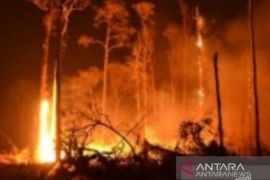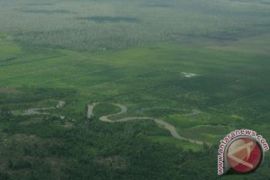According to him the area of peat land in Indonesia reach 14 million hectares. Most of the land is in Kalimantan and Sumatra islands. Unfortunately due to land peat use conversion 50 percent emission are supplied to the Earth.
"Peat land must not be converted in any form because the carbon stored in the lands is ten times bigger than that in mineral soil. Therefore any small damage in peat lands will release a great emission. These conditions have impact on the increase of greenhouse effect ," Fahmuddin said.
He noted the peat land area in Jambi province reach 700,000 hectares and 50 percent are in Tanjung Jabur Timur district.
"Hence we invite farmers to learn on how to calculate the carbon contained in the peat land. It is expected that they understand the proper way to farm and reduce the emission," Fahmuddin said.
He added the government`s target to reduce 26 percent emission by 2020 is a complex issue because it influence the agriculture land development in the other side.
Therefore the government keep looking for the alternative lands for food development along with the population growth.
Although the peat land should not be converted, some criteria can be considered. Among other is the land use conversion in the peat damaged areas.
"Oil palm tree as regulated by the agricultural ministry regulation 2009 should be done at the minimum depth of 60 to 80 centimeter. Meanwhile for paddy field, rubber and acacia there is no standard regulation. However usually a maximum of ten centimeter for paddy fields, 40 centimeter for rubber and 50 centimeter for acacia is recommended," Fahmuddin explained.
Meanwhile according to the coordinator of Indonesia Conservation Community Program Jambi, Nelly Akbar based on the research done by Mc Kinsey&Company mentioning the carbon emission in Jambi in 2005 was estimated reach to 57 metric tons with the peat land area of 676,341 hectares.
"Fifty percent emission in Jambi was contributed by converted peat land. One of them from Tanjung Jabung Timur district," she noted, adding that with the land area of 300 hectares the emission was estimated to reach 14.2 metric ton.
The 156,871 hectares of the total peat land in Jambi are purposed for Berbak national park, Tahura nature area, and protected forest while about 50 percent of existing peat land is in open condition and for the other designated as industrial timber plantations, plantations, agriculture, mining and settlements, she said.(*)
Editor: Aditia Maruli Radja
Copyright © ANTARA 2012











